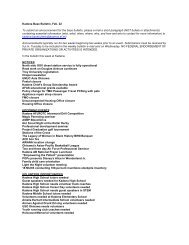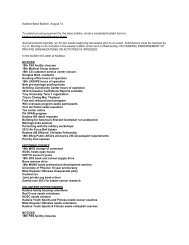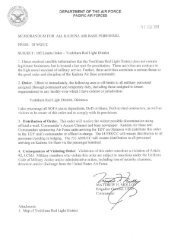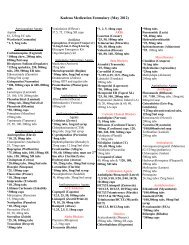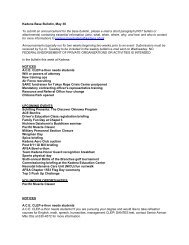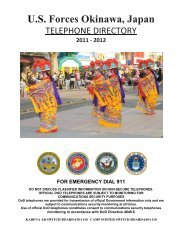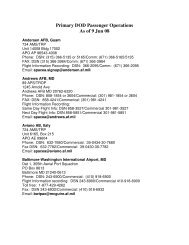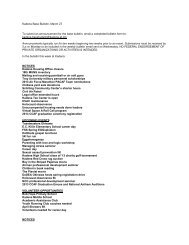JP 3-52, Joint Airspace Control - Defense Technical Information ...
JP 3-52, Joint Airspace Control - Defense Technical Information ...
JP 3-52, Joint Airspace Control - Defense Technical Information ...
You also want an ePaper? Increase the reach of your titles
YUMPU automatically turns print PDFs into web optimized ePapers that Google loves.
<strong>Airspace</strong> <strong>Control</strong> Planning Considerationsdegradation to full degradation and should consider degradation due to changingenvironmental conditions.4. Integration of <strong>Joint</strong> <strong>Airspace</strong> <strong>Control</strong> and Civil Air Traffic <strong>Control</strong> OperationsIntegration of joint airspace control and civil ATC is vital to successfuljoint/multinational air operations. The ACP should provide procedures to fullyintegrate the resources of the military and civil ATC facilities responsible forterminal-area airspace control or en route ATC when required. Civil ATCintegration may require detailed negotiations through the Department of State or nationaland local ATC agencies. All ATC elements or their liaisons should be involved from theoutset in planning and executing airspace management and should make sure airspacerequirements get coordinated with and approved by the appropriate agencies. Elementsmay need to participate in the development and integration of an HN airspaceinfrastructure. ATC personnel may also provide planning, terminal, airspace information,and forward-area support services to aviation assets conducting nation assistance.5. Integration of <strong>Joint</strong> <strong>Airspace</strong> <strong>Control</strong> and Air <strong>Defense</strong> OperationsIntegration of joint airspace control and air defense is also vital to successfuljoint/multinational air operations.a. Prioritization and integration of joint airspace control and air defenseactivities is essential. <strong>Airspace</strong> control procedures will be used to assist in aircraftidentification, facilitate engagement of enemy aircraft, and provide safe passage offriendly aircraft.b. ROE and procedures must give air defense forces freedom to engage mannedand unmanned hostile aircraft and missiles. However, procedures must be establishedin the ACP and promulgated in the ACO to allow identification of friendly aircraft, toprevent delays in offensive operations, and mitigate situations which could causefratricide. These procedures need to be simple to execute for both aircrews andsurface air defense personnel and may include visual, electronic, geographic, and/ormaneuver means for sorting friend from foe. Air defense operations should not causedelays in air operations by creating unnecessarily complicated or lengthy air routestructures. ACMs should not unduly restrain surface-to-air weapons. <strong>Airspace</strong> controlprocedures objectives are shown in Figure III-3.c. Air defense forces and systems are vulnerable to massed attacks across narrowfrontages, therefore a flexible and adaptable ACP with well thought out airspace controlprocedures is essential to providing the JFC freedom of maneuver within the operationalarea. The procedures should allow coordinated employment of air, land, or maritime airdefense systems against the threat, and use the inherent flexibility of air defense airborneplatforms to mass forces to meet the enemy attackers.III-5



